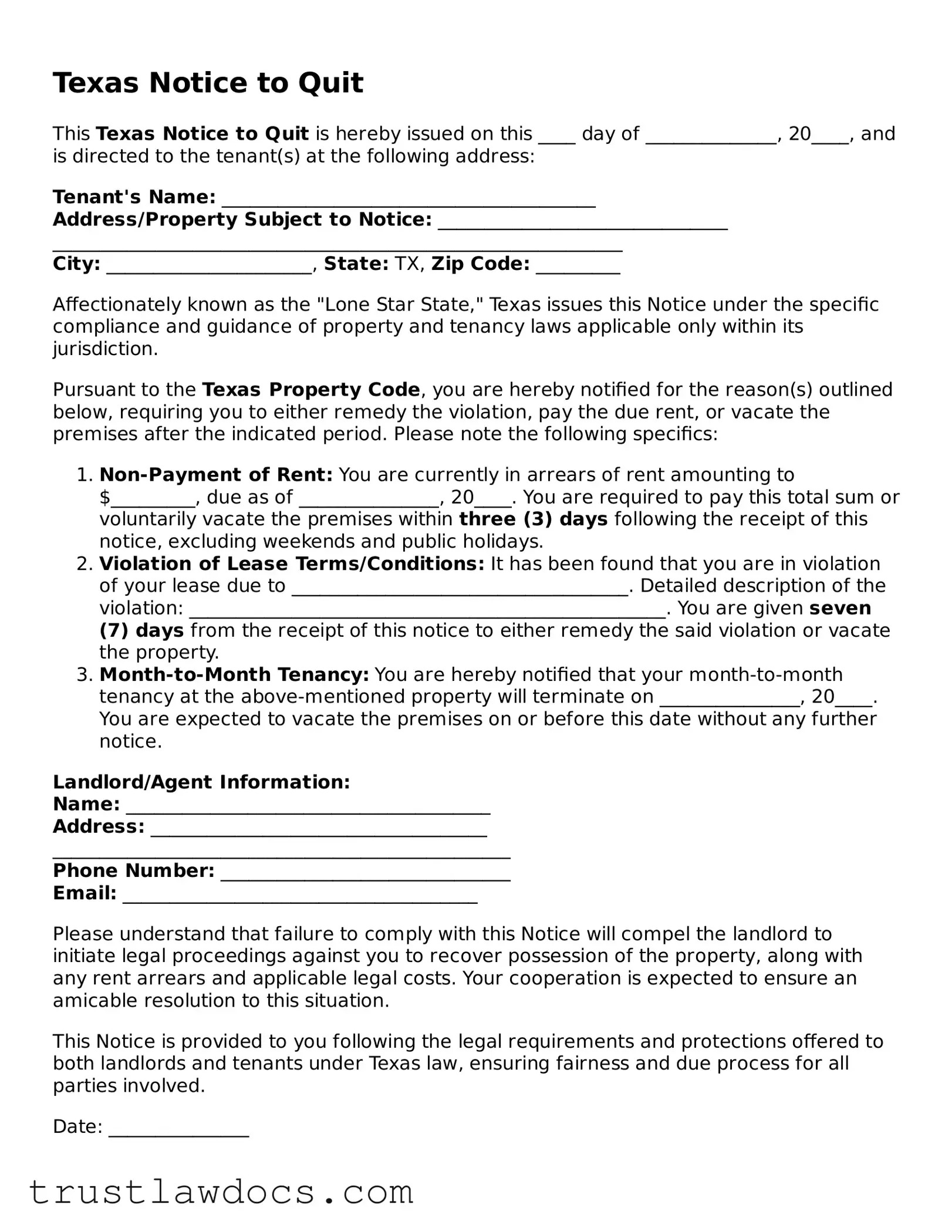Texas Notice to Quit
This Texas Notice to Quit is hereby issued on this ____ day of ______________, 20____, and is directed to the tenant(s) at the following address:
Tenant's Name: ________________________________________
Address/Property Subject to Notice: _______________________________
_____________________________________________________________
City: ______________________, State: TX, Zip Code: _________
Affectionately known as the "Lone Star State," Texas issues this Notice under the specific compliance and guidance of property and tenancy laws applicable only within its jurisdiction.
Pursuant to the Texas Property Code, you are hereby notified for the reason(s) outlined below, requiring you to either remedy the violation, pay the due rent, or vacate the premises after the indicated period. Please note the following specifics:
- Non-Payment of Rent: You are currently in arrears of rent amounting to $_________, due as of _______________, 20____. You are required to pay this total sum or voluntarily vacate the premises within three (3) days following the receipt of this notice, excluding weekends and public holidays.
- Violation of Lease Terms/Conditions: It has been found that you are in violation of your lease due to ____________________________________. Detailed description of the violation: ___________________________________________________. You are given seven (7) days from the receipt of this notice to either remedy the said violation or vacate the property.
- Month-to-Month Tenancy: You are hereby notified that your month-to-month tenancy at the above-mentioned property will terminate on _______________, 20____. You are expected to vacate the premises on or before this date without any further notice.
Landlord/Agent Information:
Name: _______________________________________
Address: ____________________________________
_________________________________________________
Phone Number: _______________________________
Email: ______________________________________
Please understand that failure to comply with this Notice will compel the landlord to initiate legal proceedings against you to recover possession of the property, along with any rent arrears and applicable legal costs. Your cooperation is expected to ensure an amicable resolution to this situation.
This Notice is provided to you following the legal requirements and protections offered to both landlords and tenants under Texas law, ensuring fairness and due process for all parties involved.
Date: _______________
_____________________________
Signature of Landlord/Agent
This document is intended as a formal notice and should be regarded as legal correspondence concerning the matter stated herein. Please consult with a legal advisor or the appropriate legal aid services if you have any questions or need clarification regarding your rights and responsibilities under Texas law.
